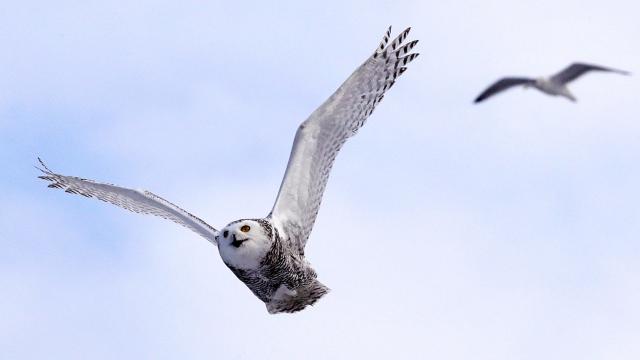Central Park is prime bird real estate, and on Wednesday, a prime bird showed up. Birders flocked to the park to check out a snowy owl, the first recorded sighting of the bird in more than a century in the park. There’s something wildly incongruous about a stark-white owl on a baseball diamond in the heart of Manhattan. But this type of marginal habitat could actually be key to helping the owls and other species hang tough in a warming world.
The last reliable snowy owl sighting in Central Park was in 1890, according to a tweet from American Natural History Museum ornithologist Paul Sweet. That explains why a throng of onlookers flocked to see it this week, bringing back shades of 2018’s hot duck (or Mandarin duck, if you prefer its non-internet moniker). But while the hot duck was a non-native species, the snowy owl is native to the New York area, though not the 400 hectare chunk of greenery in the middle of Manhattan.
[referenced id=”1667113″ url=”https://gizmodo.com.au/2021/01/scientists-found-the-oldest-known-grizzly-bear-in-yellowstone/” thumb=”https://gizmodo.com.au/wp-content/uploads/2021/01/26/j1sw5ysj8h3zfky4duup-300×207.jpg” title=”Scientists Found the Oldest Known Grizzly Bear in Yellowstone” excerpt=”Scientists found a 34-year-old grizzly bear in southwest Wyoming, identifying him by a mark on his lip made by biologists in 1989. That’s the oldest grizzly ever known in the Yellowstone region that includes parts of Montana, Idaho, and Wyoming. Respect your elders.”]
“They like more flat open areas, and that’s that’s the opposite of what New York City is,” Brooke Bateman, the director of climate science at the Audubon Society, said. “That being said, it’s not atypical to have them in this area, especially out here. I’m based on Long Island and most winters, we do get a few records of snowy owls, particularly on the south shore beaches of Long Island. The open beachy habitat sort of mimics that open tundra and flat habitat that they normally use in their winter range.”
The baseball diamond is a miniature version of the beach habitat, making it the perfect landing spot for a snowy owl looking to do some hunting. Bateman said the birds are nomadic and can travel across a range that extends from the Arctic to the northern tier of the U.S. They’re known as “irruptive species,” a term for animals that sometimes expand well beyond their normal range under the right conditions.
In the Arctic, their main food are lemmings, a rodent that pokes around on the tundra. During years when lemmings are plentiful, owl populations can also boom, and the owls move to the edges of their range. Bateman said bad hunting years in the Arctic can also send the owls searching farther afield for food, and snowy owls have been observed as far south as Hawaii.
The climate crisis could alter the owls’ lives in all parts of their range. Audubon Society research released in 2019 found that the owl’s winter range in New York could degrade, and up to 26% of it could be lost even if the world manages to meet the Paris Agreement goal of cutting off warming at 2 degrees Celsius above pre-industrial levels. Bateman noted that, in their breeding range, only 7% of their habitat would remain suitable if warming trends continue. In the Arctic, temperatures are rising at three times the rate of the rest of the world. That’s led to the rise of rain-on-snow events that could make hunting harder for owls by forming a thick ice crust on snowpack. Rising spring temperatures in turn can melt out that snowpack earlier, creating drier conditions later in the year.
Conserving habitat is a huge goal of the Biden administration, which committed to setting aside 30% of U.S. land and water for protection by 2030, among a flurry of other executive orders. But the Central Park sighting is a good reminder that conservation is not always about setting aside huge tracts of untouched land (though that’s obviously great); there’s value in conserving marginal habitat in the owls’ — and other birds’ — range. That can mean creating more green space and planting more native plants in parks, prospects that are good for birds and us, too.
“The snowy owl, it’s obviously in Central Park for a reason,” Bateman said. “They have been finding places in New York City outside of Manhattan for a while, so I think that that’s an indicator that they are finding what they need in these areas. We just have to make sure that we don’t stress them out too much.”
